Top 9 Brandfolder Alternatives & Competitors in 2024
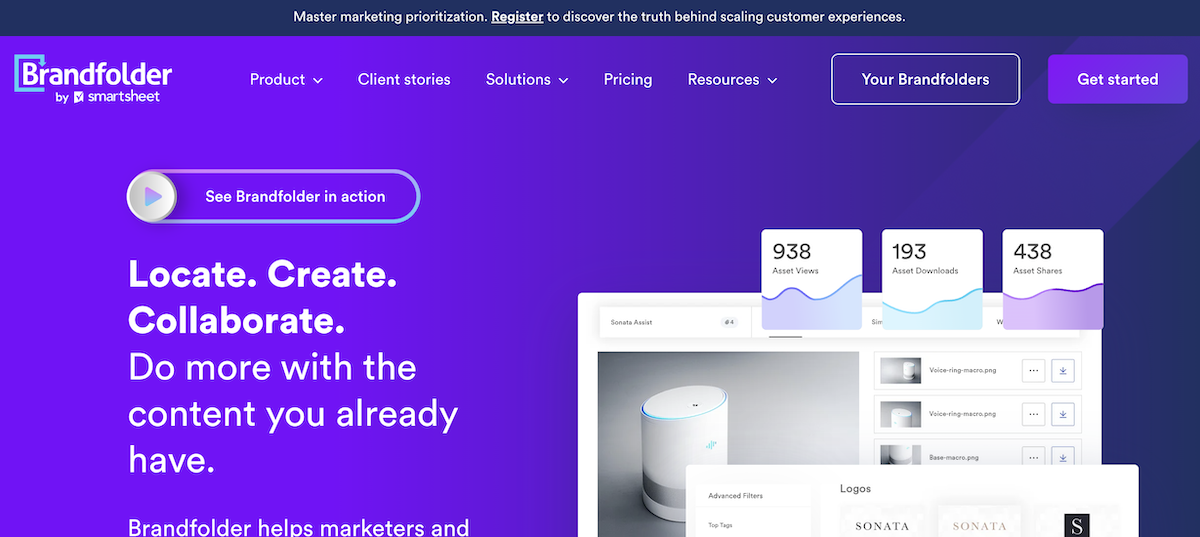
Brandfolder has carved out a position in the digital asset management space. Designed for marketers and creatives, this platform simplifies the organization and distribution of digital assets. For many businesses, finding the right asset can be a chore, often leading to delays and frustration. Brandfolder addresses this by providing a user-friendly, cloud-based system that allows teams to access their assets quickly. Many users appreciate the ease of its search functionality, making it a preferred choice for those trying to enhance productivity.
Brandfolder offers tools for sharing assets with different stakeholders, whether they’re internal teams or external partners. The layer of privacy controls and permission settings makes it easier for organizations to protect their brand assets while still facilitating collaboration. Businesses of all sizes, from startups to Fortune 500 companies, trust Brandfolder to manage their assets effectively. The combined benefits of usability and insightful analytics make Brandfolder a strong contender in the digital asset management arena, but there are alternatives worth exploring as well.
While brandfolder is a great product, it’s always good to shop around and look for alternatives. This article identifies some top competitors and their pros and cons.
Table of Contents
Widen
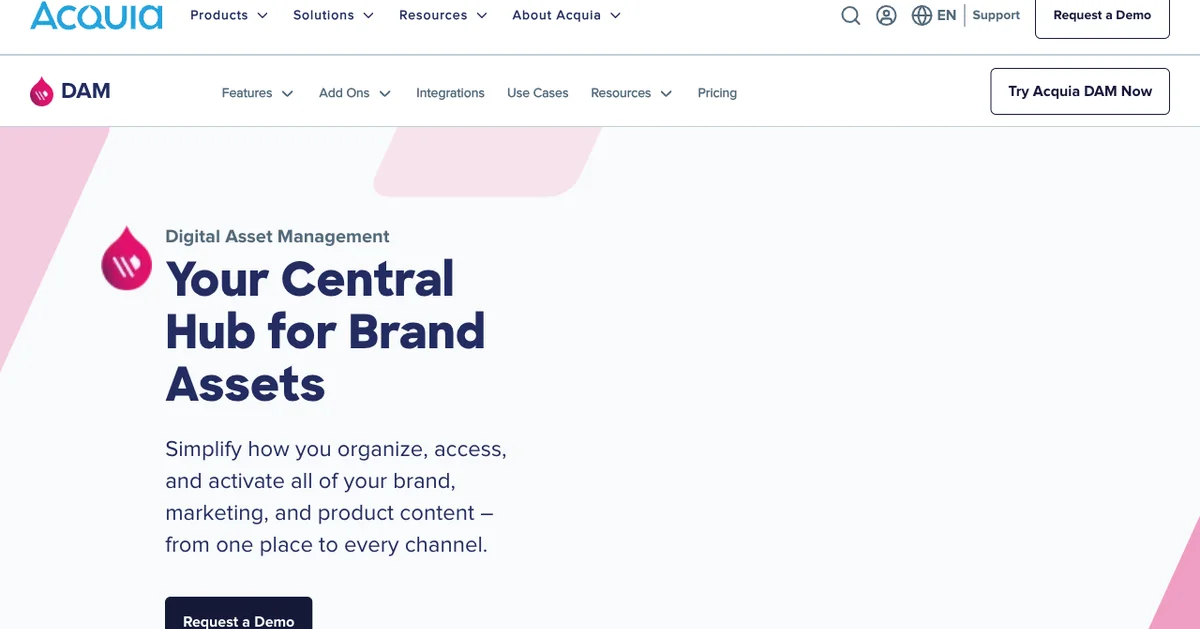
Widen is a key player in the Digital Asset Management (DAM) space, known for its platform that centralizes brand, marketing, and product content. Their offering simplifies how organizations manage their digital assets, making it a suitable alternative to Brandfolder.
Widen highlights user-friendly design and seamless integration with existing tools. Their API lets users connect their assets and metadata across platforms, which is crucial for businesses that need to scale and adapt quickly. Widen’s AI-powered features streamline workflows, making tasks like cataloging and content discovery less time-consuming. This benefits creative teams who prioritize efficiency.
The platform’s focus on analytics sets it apart. Widen provides metrics showing when, where, and how content is used, helping businesses optimize marketing strategies and reduce wasted investment. They allow users to track asset performance, aiding data-driven decisions about content.
Widen’s market positioning revolves around empowering organizations with tools to maintain a consistent brand identity while accelerating product launches. Their platform promotes collaboration, offering self-service access to assets tailored to different teams, from marketing to sales.
Widen brings unique advantages to the DAM landscape. The combination of intuitive design, robust analytics, and integration capabilities makes it a strong alternative to Brandfolder.
Pros
- User-friendly interface
- AI-powered workflow automation
- Strong analytics for performance tracking
- Seamless integration with other tools
- Self-service access for team members
Cons
- May require a learning curve for new users
- Pricing can be a consideration for smaller businesses
Bynder
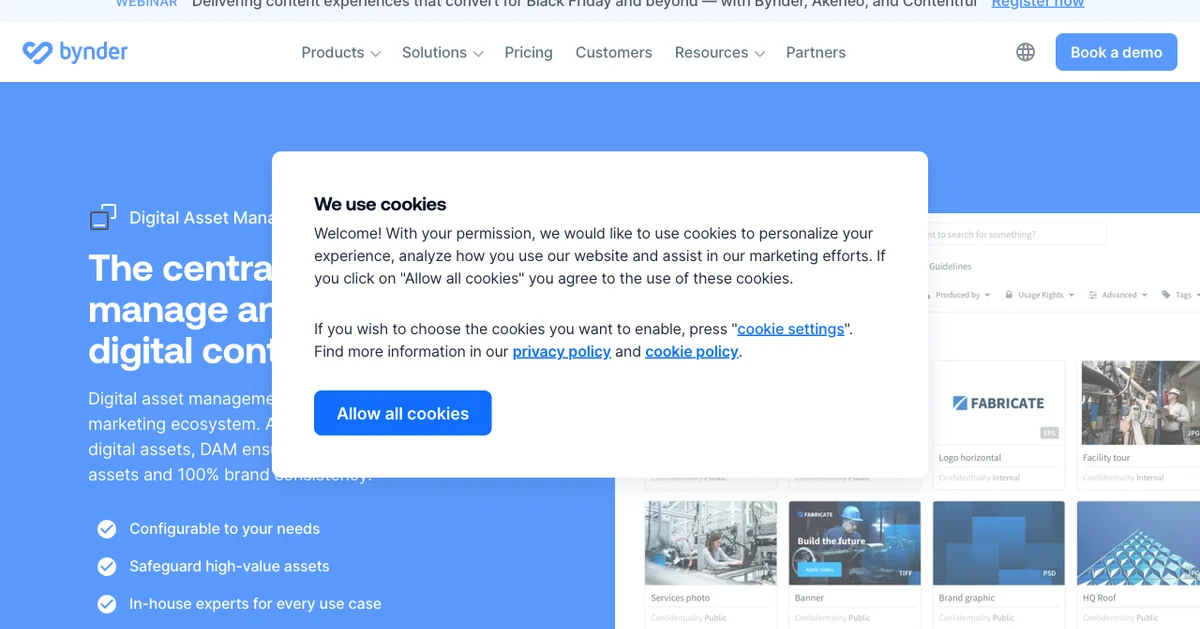
Bynder stands out in the Digital Asset Management (DAM) space as a user-friendly hub for organizing, sharing, and safeguarding digital assets. Founded to meet the demands of modern marketing, Bynder has evolved into a solution that integrates seamlessly into various tech ecosystems. Users appreciate its centralized platform where teams can quickly access and manage their digital content.
Bynder’s AI capabilities enhance metadata for assets, improving searchability and helping eliminate duplicates. This is helpful for teams handling large volumes of content. Security is a priority; Bynder allows users to control access and assign usage rights, which ensures that sensitive assets remain protected. This feature provides peace of mind for companies concerned about brand reputation and the risks associated with unauthorized asset use.
The platform excels in making asset sharing hassle-free. Users can share files both internally and externally with comprehensive tracking options. This means that teams know how their assets are used post-sharing, reinforcing accountability. Bynder offers flexibility in asset downloads, allowing users to obtain files in various formats tailored to specific channels or projects. This leads to quicker time-to-market while maintaining brand consistency.
Bynder delivers an efficient, secure, and versatile DAM solution that appeals to businesses looking to streamline asset management.
Pros
- Easy-to-navigate interface for organizing assets
- Strong security features for controlling asset access
- AI-driven tools for enhancing asset searchability and management
- Flexible file sharing and downloading options
- Integrates well with existing martech stacks
Cons
- May have a steeper learning curve for less tech-savvy users
- Some features may be more advanced than smaller businesses require
- Pricing can be on the higher side compared to other options in the market
Canto
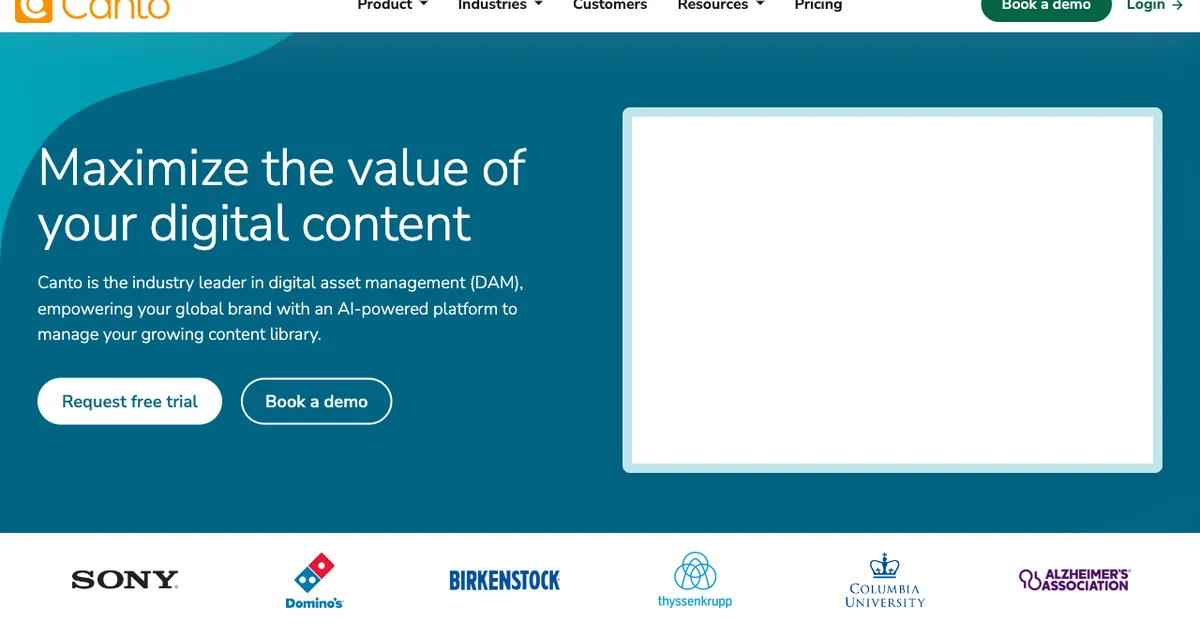
Canto is a player in the digital asset management (DAM) arena, offering a platform designed to manage and make the most of digital content. With a focus on creating a centralized hub for a brand’s content lifecycle, Canto serves as a single source of truth for organizations. Their platform organizes assets, enhances collaboration, and streamlines distribution, making it easier for teams to share and use content effectively.
One of Canto’s standout features is its AI-powered search capability. This allows users to quickly locate assets without going through endless files. The efficiency gained can be a game-changer for teams that often need to find specific content. Additionally, Canto promotes collaboration by enabling real-time work with team members, which can significantly reduce time-to-market for assets.
Canto’s integration with various tools teams already use can make the transition smoother. This flexibility is important for companies that rely on specific software to operate efficiently. By connecting seamlessly with existing workflows, Canto positions itself as a convenient and user-friendly alternative.
Canto’s mission is clear: help brands realize the full potential of their digital content. They provide value not just in organizing assets, but also in driving a more cohesive strategy for content management across teams.
Pros
- Centralized hub for all digital assets
- AI-powered search for quick asset retrieval
- Streamlined distribution for wider reach
- Real-time collaboration features
- Seamless integrations with existing tools
Cons
- May require a learning curve for new users
- Pricing may be a consideration for smaller teams
Aprimo
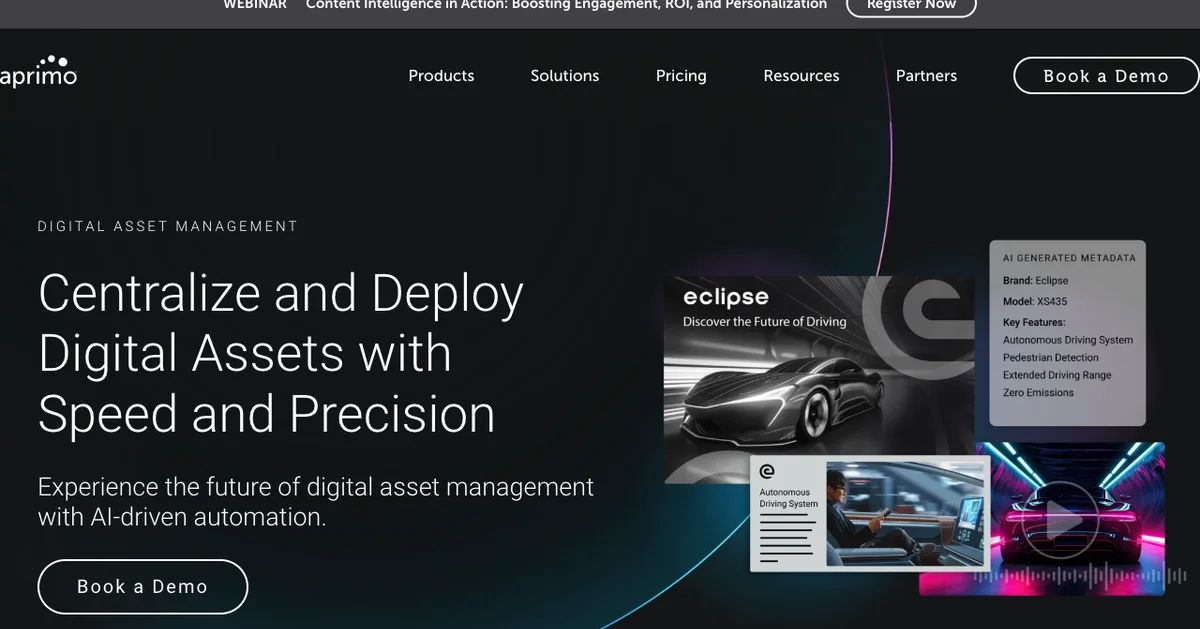
Aprimo is a player in the Digital Asset Management (DAM) field, providing solutions that stand out in a crowded market. Their platform centralizes digital assets, allowing teams to manage, create, and distribute content efficiently. Aprimo uses AI capabilities, transforming asset management into a streamlined, speedy process. They focus on collaboration, enabling teams and agencies to work together seamlessly, enhancing workflow efficiency.
One of Aprimo’s features is its AI-driven automation. This helps to reduce manual processes in content creation, reviews, and approvals. As a single source of truth, Aprimo ensures that everyone has access to the most up-to-date assets. Their AI suggestions for metadata tagging enhance content discoverability, allowing users to find the assets they need quickly without manual updates.
Another aspect that sets Aprimo apart is its emphasis on brand safety and compliance. With tools such as brand portals, content guidelines, and Digital Rights Management (DRM), organizations can manage their brand’s assets while meeting legal requirements. This level of governance ensures that all content, especially AI-generated materials, undergoes human reviews for quality assurance.
Aprimo is also recognized for driving personalized digital experiences. Their platform integrates easily with existing personalization software, allowing businesses to cater content specifically to audience behaviors, resulting in enhanced engagement rates.
Aprimo offers a compelling alternative to alt_9 thanks to its focus on AI-driven processes, robust collaboration tools, and strict governance features.
Pros
- AI-powered automation speeds up workflows
- Enhanced content discoverability with smart metadata tagging
- Strong brand safety measures and compliance tools
- Real-time content personalization capabilities
Cons
- Potential complexity in setup for new users
- May require more training for team adoption
MediaValet
MediaValet is a player in the Digital Asset Management space, providing a platform for businesses to streamline content management. Founded to simplify collaboration and improve accessibility, MediaValet focuses on user experience and integration with existing workflows.
A standout feature of MediaValet is its AI tagging and search capabilities. This allows users to find assets quickly without sifting through folders. Imagine having your library at your fingertips, just a search away. MediaValet supports high-resolution file formats and offers unlimited storage, a significant advantage for companies with large media libraries.
Security and compliance are top priorities for MediaValet. With robust access controls and security certifications, businesses can feel confident that their assets are protected. They stand out for providing comprehensive support, ensuring users get the most out of the platform.
MediaValet positions itself as an all-in-one solution, emphasizing speed and scalability. This appeals to businesses that expect growth or operate in dynamic markets. Their focus on customization allows teams to tailor the platform to fit their needs—something that can save time and enhance productivity.
Consider MediaValet as an alternative to alt_9, with these key points:
Pros
- AI tagging for quick asset retrieval
- Unlimited storage for large media libraries
- Strong focus on security and compliance
- Comprehensive customer support
- Highly customizable to fit user needs
Cons
- Implementation may require setup time
- Cost may not be ideal for smaller businesses
- Learning curve for some advanced features
Cloudinary
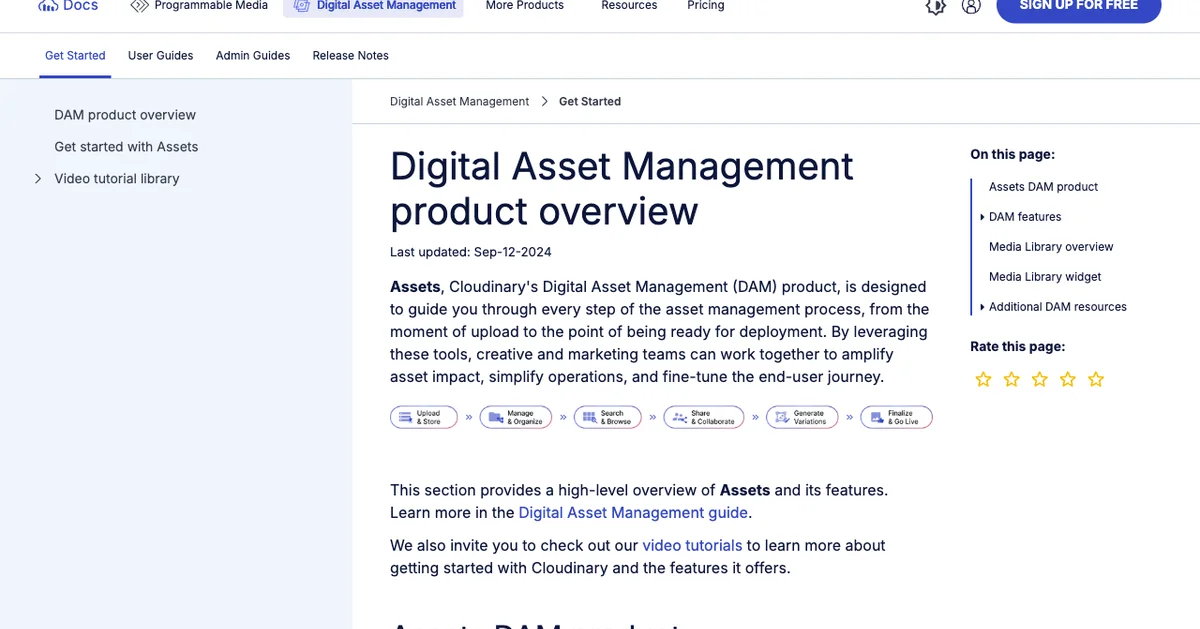
Cloudinary is a player in the Digital Asset Management (DAM) space, offering a solution for creatives and marketers. Launched to simplify how organizations manage media assets, Cloudinary comes with tools that streamline both collaboration and asset management. With a focus on enhancing user experience and optimizing the asset lifecycle, Cloudinary stands out for its features.
One of the key differentiators of Cloudinary is its AI-powered workflows. These tools help bulk editing and metadata management and allow teams to optimize their media content efficiently. The integration of a visual interface makes it easy for creatives to navigate and manage their assets. The Programmable Media platform adds a developer-friendly aspect, enabling seamless uploads and transformations that cater to technical requirements.
Cloudinary positions itself as an enterprise-grade solution, ideal for larger organizations with extensive media libraries. This focus on scalability means it can handle an organization’s growing need for digital assets while maintaining performance. Cloudinary encourages cross-departmental teamwork, creating a unified approach to asset management.
Notable benefits include automation that speeds up workflows and analytics that inform strategies. The platform also features advanced search capabilities, making it easy to find and repurpose existing assets.
Pros
- AI-powered workflows streamline asset management.
- Intuitive visual interface fosters collaboration.
- Scalable solution for large organizations.
- Developer-friendly tools for media optimization.
Cons
- May be more complex than needs for smaller teams.
- Focused primarily on larger enterprises, potentially overlooking smaller businesses.
OpenText
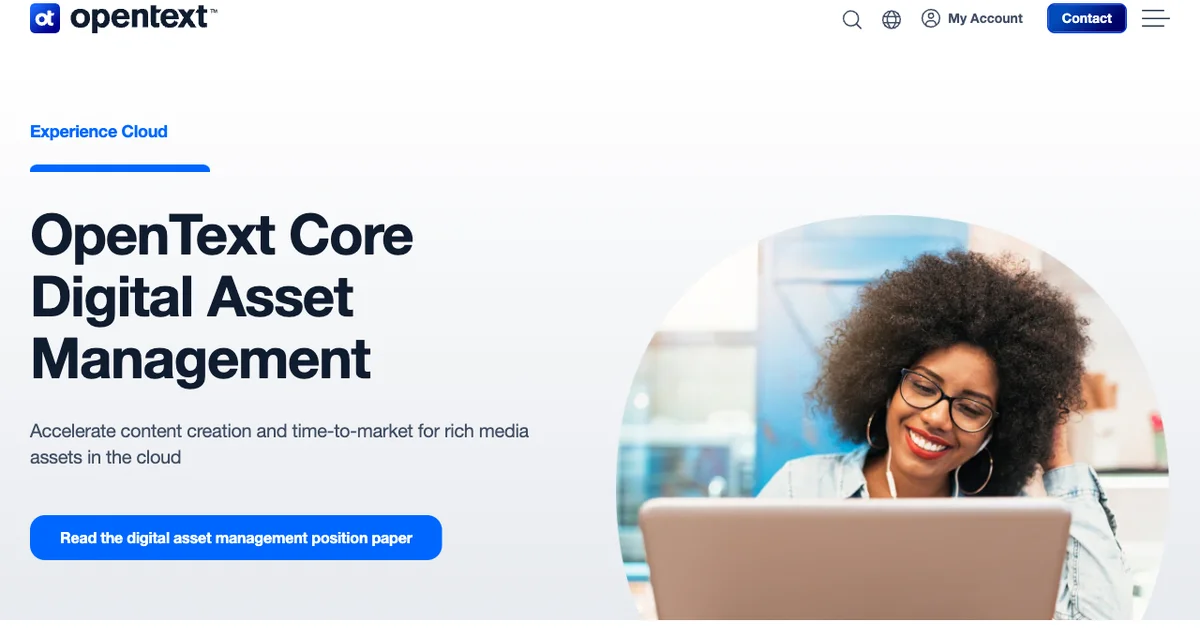
OpenText offers its Core Digital Asset Management solution to help businesses streamline content creation and distribution. OpenText is designed for marketing teams and creative professionals. Their tool is cloud-native, which lets businesses scale their operations seamlessly without the delays often associated with traditional systems.
One of the standout features of OpenText Core is its intuitive user experience. New users can quickly learn thanks to an easy-to-navigate interface that simplifies onboarding. The integrated GenAI capabilities are noteworthy. Experience Aviator, OpenText’s AI tool, automates metadata creation and helps generate images, saving time for content creators.
OpenText is a comprehensive solution with integrations with key industry players like Microsoft and Google. This lets organizations incorporate the platform into their existing workflows without disruption. Users benefit from centralized management of visual assets and brand guidelines, ensuring every piece of content aligns with the organization’s voice and appearance, fostering brand consistency.
Another aspect that sets OpenText apart is its emphasis on security and access. With secure login features that support single sign-on, users can access their digital assets from anywhere, promoting a flexible working environment that many modern teams prefer.
Pros
- Intuitive user experience that simplifies onboarding
- Integrated AI tools that enhance content creation
- Seamless integrations with popular business applications
- Focus on security and flexible access
- Centralized management for brand consistency
Cons
- May have a steeper learning curve for advanced features
- Some users might need additional training
- Pricing may not be as competitive for smaller businesses
Adobe Experience Manager
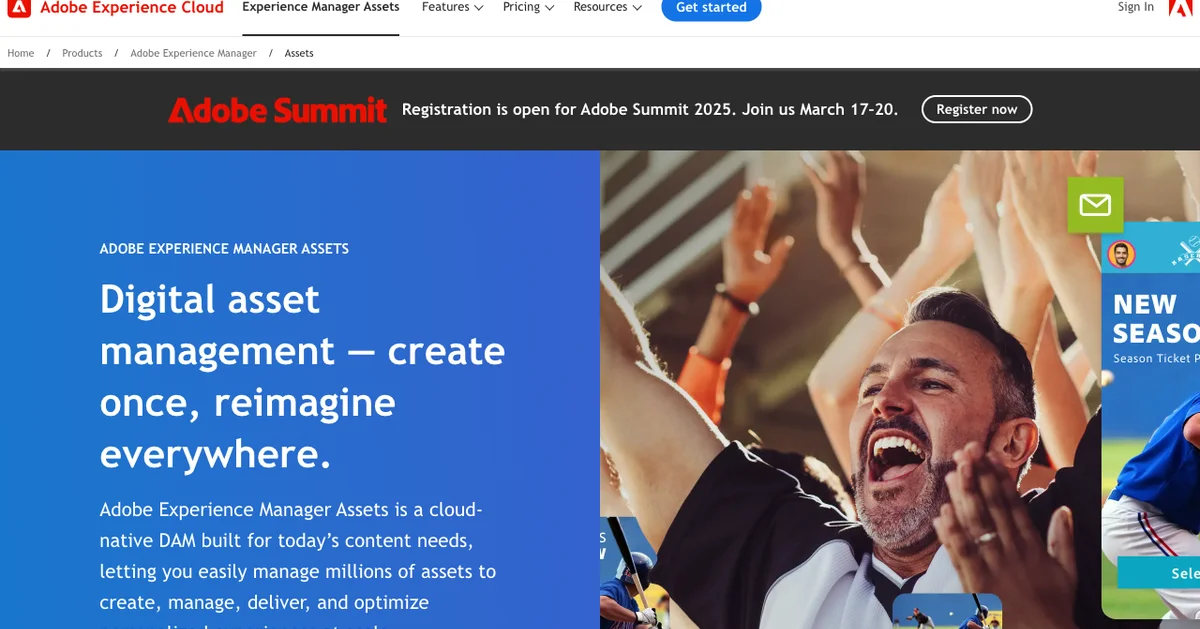
Adobe Experience Manager (AEM) is a content management solution that’s part of the Adobe Marketing Cloud. It handles digital assets—images, videos, and documents—making it an alternative to Brandfolder. AEM is appealing for larger businesses that need to manage marketing content and digital assets together.
One of AEM’s features is its integration with other Adobe tools, like Adobe Photoshop and Adobe Analytics. Teams can modify assets and analyze their performance within a familiar system. AEM provides a platform supporting collaboration across teams, ensuring everyone has access to the latest assets and content. This is crucial for companies with many contributors and stakeholders.
Adobe’s reputation in creative and marketing circles gives AEM credibility and trust. It is designed for storing assets and streamlining workflows. Features like version control and permissions help teams avoid confusion and ensure only approved content is used.
Businesses seeking a solution that integrates with existing Adobe products would find AEM helpful. Its capabilities in personalization and automated workflows enhance its appeal, tailoring content delivery to the right audiences without excessive manual effort.
Pros
- Integration with other Adobe products
- Collaborative features for teams
- Workflow and approval processes
- Personalization options for targeted marketing
Cons
- Higher price point compared to other solutions
- Complexity might be overwhelming for small teams
- Requires more time to implement and onboard users
Elvis DAM
Elvis DAM, provided by WoodWing, is a contender in the digital asset management space, offering solutions for enterprise-level content and information management. Their story involves tackling challenges such as fragmented content and inefficient workflows. They focus on enabling businesses to manage their content lifecycle, allowing for streamlined content creation, distribution, and archiving across channels.
One of the standout features of Elvis DAM is its integration suite, which connects with various tools in a company’s tech stack. This can enhance existing workflows and foster better collaboration. For teams that rely on Adobe InDesign, Elvis DAM provides an efficient plugin that integrates directly, facilitating a smooth design experience. This helps creative teams maintain brand consistency while speeding up their project timelines.
Another key aspect is the cloud-based infrastructure. Users can manage assets securely and access them anytime, reducing risks associated with information management. Organization is central to the platform—Elvis DAM structures documents and processes efficiently, ensuring that users can find the right information at the right time, leading to more informed decision-making.
Elvis DAM targets industries with complex content needs, such as publishing, healthcare, and finance. This focus allows them to deliver specialized solutions to sectors where document accuracy and process management are critical.
Pros
- Strong integration capabilities with existing tools
- Cloud-based, allowing for flexible access and collaboration
- Efficient plugin for Adobe InDesign
Cons
- Primarily geared towards enterprise-level clients
- May require training for teams to fully use its capabilities
- Some users may find the system overwhelming initially